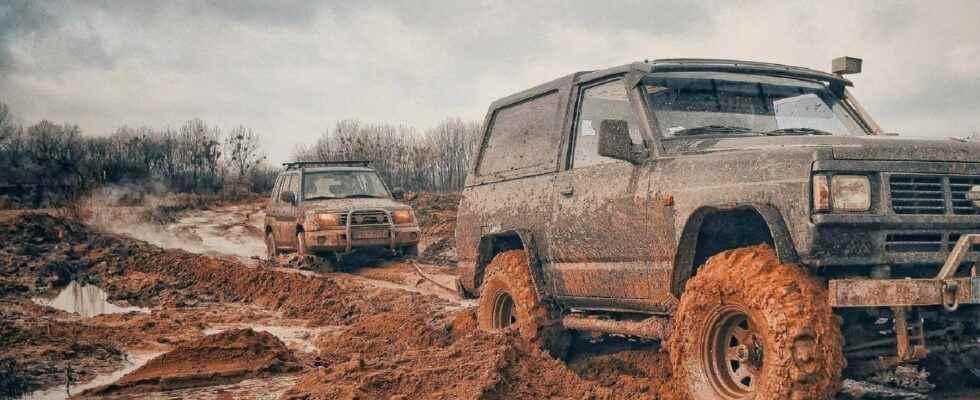Rasputitsa is a period during which the soils of Russia, Ukraine and Belarus are transformed into gigantic seas of mud. A phenomenon linked to the nature of the earth and the weather conditions that has already complicated the advance of the troops of the great wars of the past.
You will also be interested
[EN VIDÉO] How far in advance can we forecast the weather? In the 1980s, the reliability of weather forecasts did not exceed a few days. Today, most sites post forecasts for two weeks or more.
The “bad road season”, literal translation of the term Rasputitsa, is the most difficult time to travel through Eastern Europe. This phenomenon weather report occurs every year, sometimes twice a year, in the spring after the thaw, and in the fall during heavy rains. The Rasputitsa is linked to two parameters: the type of soil in these geographic regions and the end of winter weather conditions.
Black earth, soil filled with humus and clay
Two-thirds of Ukraine is covered with black soil: considered the most fertile land on the planet, it is known to the agricultural world as the ” granary of Europe”, which made it possible to hoist Ukraine to the 5and rank of grain producers in the world. But this incredible fertility is linked to a thick, deep soil filled with fertilizers. Chernosols (or chernozom in Russian) are indeed widespread in the steppes which benefit from a Continental climate temperate. In these soils color very dark and texture lumpy, there is 3 to 15% humus, a matter organic from the decomposition of plants, rich in potash, phosphorus and trace elements. That Earth is thick and deep (up to 6 m in Ukraine), but also very humid due to the humus and the high rate ofclay which have the effect of storing moisture.
Melting ice and snow in the spring
In general, from mid-March the weather begins to soften in Ukraine and melts the gel and the snow of thewinter. This moisture infiltrates the muck, which is already damp and porous at the base, and transforms these soils into deep, sticky seas of mud in which it is almost impossible to move forward.
This mud season can last three weeks to three months depending on the weather conditions of the year; it begins in the south, in the Crimea, before progressing north, towards Kyiv and Belarus. However, this winter of 2022 was milder than average, and wetter, especially in January. January temperatures were 2-3°C above average and rains were frequent with less frost. This abnormally mild climate at the start of the year explains why seas of mud have already been present since mid-February in Ukraine. Gold, the current cold snap this week (down to -15°C locally) is causing some soils to freeze again, before a new thaw is expected next week. Between March 15 and 18, we can therefore expect the land to thaw and therefore the formation of new seas of particularly sticky mud.
#Ukraine
Historical reminders: the thaw generates a mud season (Rasputitsa) which lasts 3-4 weeks, and goes up from the South (Crimea) to the North in a few days to Belarus.
In 1942, it started around 03/21
In 1943, on 03/18
In 1944, on 03/17
(Dates according to KTB) pic.twitter.com/HYskTILDot— cedric mas (@CedricMas) March 5, 2022
Remember that the Raspoutitsa has already greatly disrupted the advance of the troops during the wars of the past. In particular, it slowed down the Napoleon’s Great Army during his campaign in Russia in 1812. Also during the Second World War, the Wehrmacht and the Red Army also had to abandon some of their tanks in the mud.
Interested in what you just read?
